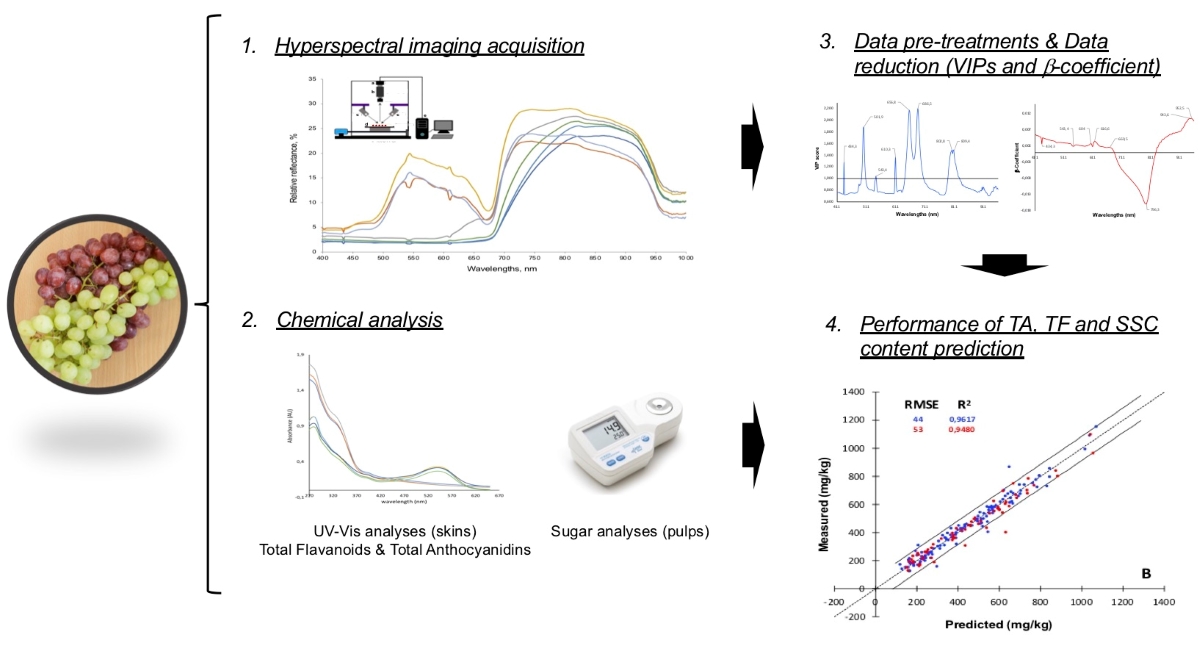Table grape quality is of importance for consumers and thus for producers. The objective quality determination is usually destructive and very simple with the assessment of only a couple of parameters. This study proposed to evaluate the possibility of hyperspectral imaging to characterize table grapes quality through its sugar, total flavonoid and total anthocyanin contents. Different pre-treatments (WB, SNV, 1st and 2nd derivative) and different methods were tested: PLS with full spectra, then Multiple Linear Regression (MLR) were realized after selecting the optimal wavelengths thanks to the regression coefficients (-coefficients) and the Variable Importance in Projection (VIP) scores from the full spectra. All models were good showing that hyperspectral imaging is a relevant method to assess sugar content and global phenolic content. The best model was dependent on the variable. The best models were from the full spectra and with the 2nd derivative pre-treatment for TSS; from VIPs optimal wavelengths using SNV pre-treatment for Total Flavonoid and total Anthocyanin content. Thus, relevant models were proposed using the full spectra, as well as specific windows and wavelengths in order to reduce the data sets and limit the data storage to enable an industrial use.

